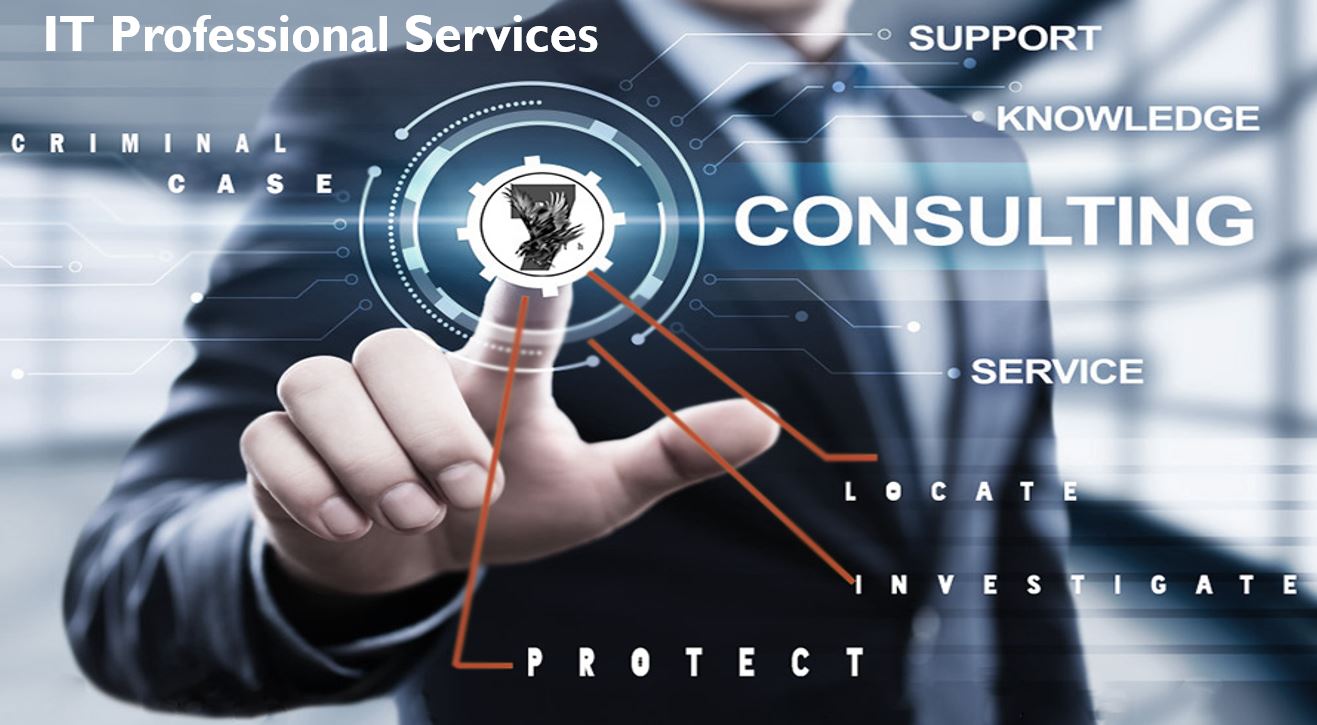
In today’s digital age, the landscape of cybersecurity is continuously evolving. As businesses become increasingly reliant on digital operations, the need for robust security measures has never been more critical. Advanced endpoint security software is at the forefront of this evolution, providing comprehensive protection for devices and networks against a wide array of cyber threats. In this blog, we will delve into the intricacies of advanced endpoint security solutions and their significance in modern IT services.
Understanding Endpoint Security
Endpoint security refers to the protection of end-user devices such as laptops, desktops, and mobile devices. Traditionally, antivirus software was the go-to solution for endpoint security. However, with the advent of sophisticated cyber threats, traditional antivirus programs are no longer sufficient. This is where advanced endpoint security software comes into play, offering a multifaceted approach to safeguard endpoints.
Key Features of Advanced Endpoint Security Software
- Behavioral Analysis and Machine Learning Advanced endpoint security solutions leverage behavioral analysis and machine learning to detect and respond to threats. By analyzing the behavior of applications and files, these systems can identify anomalies that may indicate a cyberattack, even if the specific threat is previously unknown.
- Endpoint Detection and Response (EDR) EDR tools provide continuous monitoring and response to advanced threats. They offer visibility into endpoint activities, enabling IT teams to detect, investigate, and remediate threats quickly. EDR solutions can capture detailed information about suspicious activities, helping in understanding the scope and impact of an attack.
- Automated Threat Intelligence Modern endpoint security software integrates automated threat intelligence feeds, which continuously update the system with the latest threat data. This proactive approach ensures that endpoints are protected against emerging threats without manual intervention.
- Application Whitelisting Application whitelisting allows only pre-approved applications to run on endpoints. This significantly reduces the risk of malware infections by preventing unauthorized applications from executing.
- Zero Trust Security Model The zero trust model is a fundamental principle of advanced endpoint security. It operates on the premise that no application or user should be trusted by default, even if they are within the organization’s network perimeter. This model enforces strict verification processes for every access request.
The Role of IT Services in Endpoint Security
IT services play a pivotal role in deploying, managing, and optimizing advanced endpoint security solutions. Here’s how:
- Assessment and Planning IT service providers assess an organization’s security posture and plan the deployment of endpoint security solutions tailored to their specific needs. This involves evaluating current vulnerabilities, understanding the threat landscape, and designing a robust security architecture.
- Deployment and Integration Successful deployment of endpoint security software requires seamless integration with existing IT infrastructure. IT service providers ensure that the software is correctly configured and integrated with other security tools to create a cohesive defense system.
- Continuous Monitoring and Management Endpoint security is not a set-and-forget solution. IT services continuously monitor the endpoints, manage updates, and ensure that security protocols are consistently enforced. This proactive management helps in early detection and mitigation of potential threats.
- Incident Response In the event of a security breach, IT service providers are crucial in executing incident response plans. They help contain the breach, minimize damage, and restore normal operations. Post-incident analysis is also conducted to prevent future occurrences.
- User Training and Awareness Human error remains one of the weakest links in cybersecurity. IT service providers often conduct training sessions to educate users about best practices in endpoint security. This includes recognizing phishing attempts, safe browsing habits, and proper handling of sensitive information.
Benefits of Advanced Endpoint Security
- Enhanced Protection: With multi-layered defense mechanisms, advanced endpoint security offers superior protection against known and unknown threats.
- Improved Compliance: Many industries have stringent regulatory requirements. Advanced endpoint security helps organizations comply with these regulations by safeguarding sensitive data.
- Operational Efficiency: Automated threat detection and response reduce the workload on IT teams, allowing them to focus on strategic initiatives.
- Reduced Downtime: By quickly identifying and mitigating threats, advanced endpoint security minimizes downtime and ensures business continuity.

Exploring the Multifaceted World of IT Services
IT services encompass a broad range of activities and functions designed to support and enhance the technology infrastructure of businesses and organizations. These services are integral to ensuring the smooth operation of daily activities, improving efficiency, and enabling digital transformation. Here, we explore various aspects of IT services, highlighting their roles, types, and significance.
Types of IT Services
1. Managed IT Services
Managed IT services involve outsourcing the responsibility for maintaining and anticipating the need for a range of processes and functions to improve operations and cut expenses. This can include:
- Network Management: Monitoring and managing network infrastructure to ensure optimal performance.
- Cloud Services: Managing cloud computing resources and services, including storage, computing power, and networking.
- Security Management: Implementing and overseeing cybersecurity measures to protect against threats.
2. IT Support Services
These services provide technical support to help businesses resolve IT issues quickly and efficiently. IT support services can be divided into:
- Help Desk Support: Assisting users with troubleshooting, problem-solving, and providing guidance on using software and hardware.
- On-Site Support: Sending technicians to business locations to resolve complex issues that cannot be handled remotely.
3. Infrastructure Services
Infrastructure services focus on the physical and virtual components of IT systems, including:
- Server Management: Ensuring servers are operating correctly, performing maintenance, and managing server environments.
- Network Setup and Management: Designing, implementing, and maintaining network architectures.
- Data Center Management: Overseeing data center operations, including power, cooling, and physical security.
4. Cybersecurity Services
These services are dedicated to protecting an organization’s information and IT systems from cyber threats. Key components include:
- Threat Intelligence: Gathering and analyzing data on potential threats to preemptively protect against attacks.
- Incident Response: Responding to security breaches and mitigating their impact.
- Security Audits and Compliance: Conducting regular audits to ensure compliance with security standards and regulations.
5. Consulting Services
IT consulting services help organizations plan and execute IT strategies that align with their business goals. This includes:
- Technology Roadmapping: Developing long-term plans for technology investments and upgrades.
- Business Process Optimization: Using technology to streamline and improve business processes.
- Digital Transformation: Guiding businesses through the adoption of new technologies to enhance operations and customer experiences.
6. Software Development Services
These services involve creating, deploying, and maintaining software applications tailored to meet specific business needs. This includes:
- Custom Application Development: Building bespoke software solutions tailored to an organization’s unique requirements.
- System Integration: Ensuring different software systems work together seamlessly.
- Software Maintenance: Updating and maintaining software to ensure it remains functional and secure.
The Importance of IT Services
Operational Efficiency
IT services ensure that technological systems operate smoothly, reducing downtime and improving productivity. Efficient IT support and management allow employees to focus on their core tasks without being hindered by technical issues.
Enhanced Security
Cybersecurity services protect organizations from a wide range of threats, including data breaches, malware, and phishing attacks. By implementing robust security measures, businesses can safeguard sensitive information and maintain customer trust.
Scalability
IT services provide the flexibility to scale resources up or down based on business needs. This is particularly important for growing businesses that need to adapt their IT infrastructure to accommodate new demands.
Cost Management
Outsourcing IT services can be more cost-effective than maintaining an in-house IT department. Managed services providers (MSPs) offer predictable pricing models, helping businesses manage their IT budgets more effectively.
Innovation and Competitive Advantage
IT consulting and software development services enable businesses to innovate and stay competitive. By adopting cutting-edge technologies and optimizing processes, organizations can enhance their offerings and improve customer experiences.
Emerging Trends in IT Services
Artificial Intelligence and Machine Learning
AI and ML are transforming IT services by enabling predictive maintenance, enhancing cybersecurity with advanced threat detection, and automating routine tasks.
Cloud Computing
The shift to cloud-based services continues to grow, offering scalable, flexible, and cost-effective solutions for businesses of all sizes. Cloud computing supports remote work and global collaboration.
Internet of Things (IoT)
IoT devices are increasingly integrated into business operations, from smart sensors in manufacturing to connected devices in healthcare. Managing these devices and the data they generate is a growing area of IT services.
Edge Computing
Edge computing brings processing power closer to the data source, reducing latency and improving performance. This is particularly important for applications requiring real-time processing, such as autonomous vehicles and smart cities.
Blockchain Technology
Blockchain offers enhanced security and transparency for transactions and data management. IT services are increasingly focusing on implementing blockchain solutions for various industries, including finance, supply chain, and healthcare.


